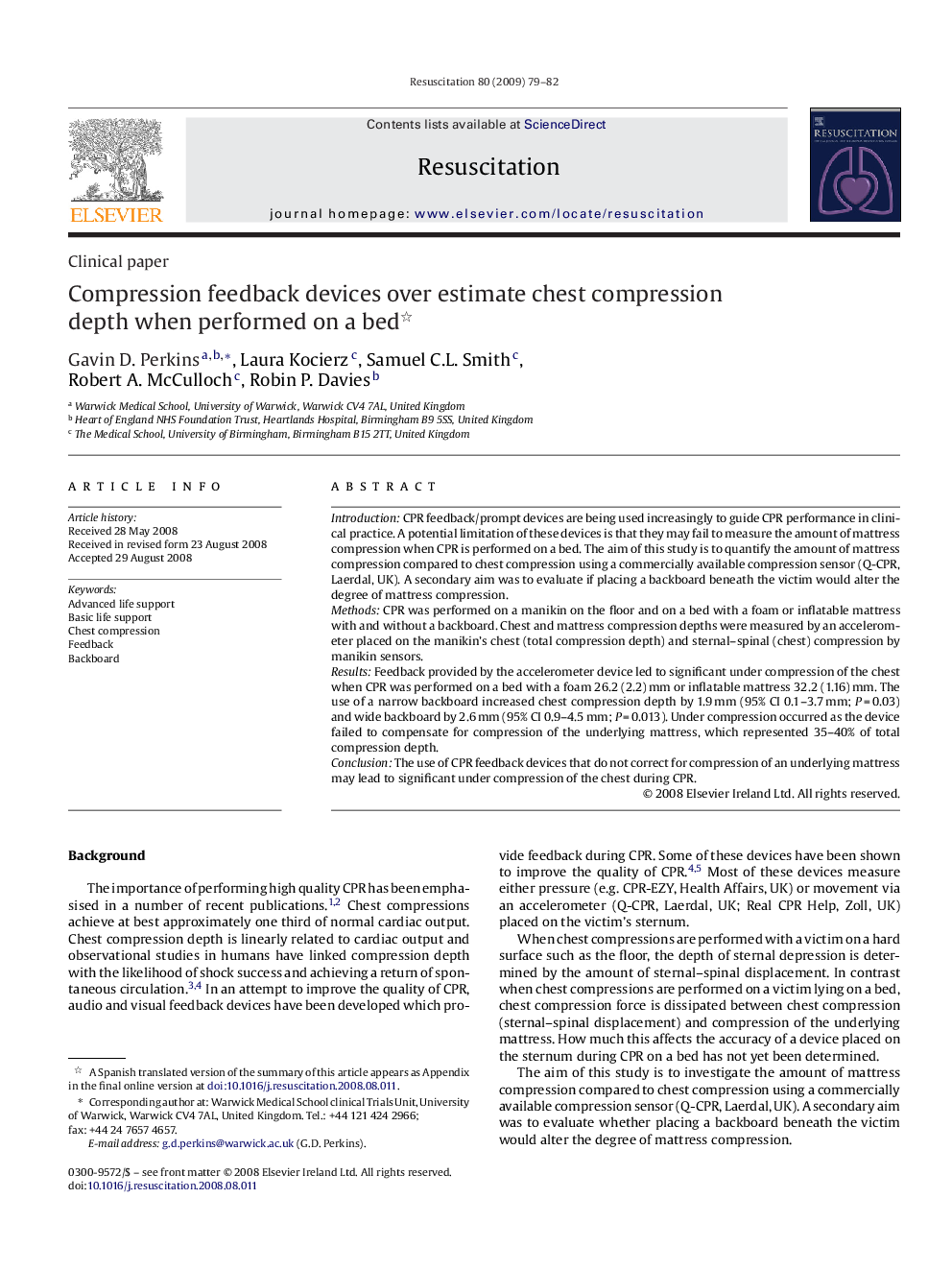| Article ID | Journal | Published Year | Pages | File Type |
|---|---|---|---|---|
| 5999446 | Resuscitation | 2009 | 4 Pages |
SummaryIntroductionCPR feedback/prompt devices are being used increasingly to guide CPR performance in clinical practice. A potential limitation of these devices is that they may fail to measure the amount of mattress compression when CPR is performed on a bed. The aim of this study is to quantify the amount of mattress compression compared to chest compression using a commercially available compression sensor (Q-CPR, Laerdal, UK). A secondary aim was to evaluate if placing a backboard beneath the victim would alter the degree of mattress compression.MethodsCPR was performed on a manikin on the floor and on a bed with a foam or inflatable mattress with and without a backboard. Chest and mattress compression depths were measured by an accelerometer placed on the manikin's chest (total compression depth) and sternal-spinal (chest) compression by manikin sensors.ResultsFeedback provided by the accelerometer device led to significant under compression of the chest when CPR was performed on a bed with a foam 26.2 (2.2)Â mm or inflatable mattress 32.2 (1.16)Â mm. The use of a narrow backboard increased chest compression depth by 1.9Â mm (95% CI 0.1-3.7Â mm; PÂ =Â 0.03) and wide backboard by 2.6Â mm (95% CI 0.9-4.5Â mm; PÂ =Â 0.013). Under compression occurred as the device failed to compensate for compression of the underlying mattress, which represented 35-40% of total compression depth.ConclusionThe use of CPR feedback devices that do not correct for compression of an underlying mattress may lead to significant under compression of the chest during CPR.
